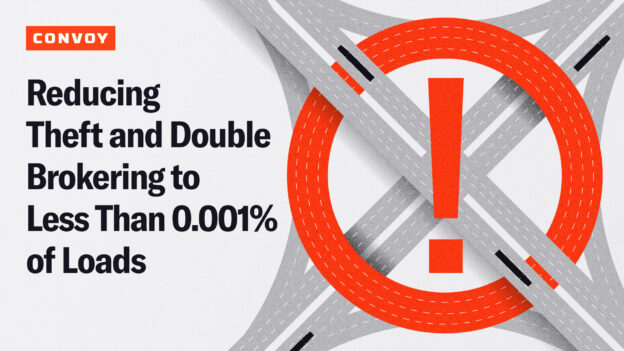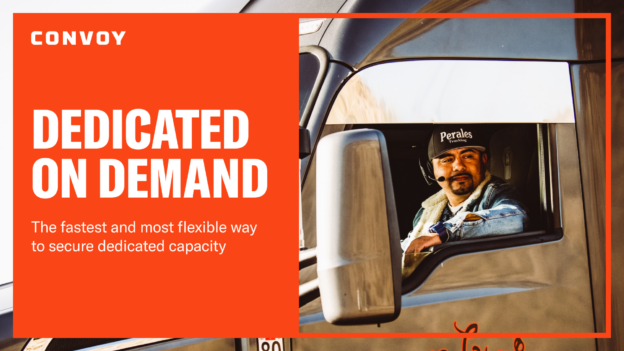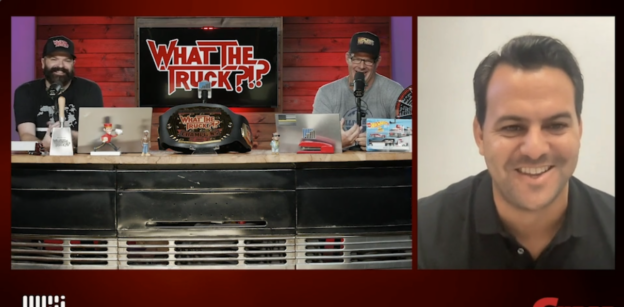Case Study: How Waiakea Transformed its Supply Chain and Reduced Shipping Costs by 50 Percent
Shippers • Published on March 20, 2019
Waiakea Hawaiian Volcanic Water is a fast growing start-up with an environmental mission: to build a green supply chain and minimize its carbon footprint. To keep up with rising demand for its product, the company needed to optimize its supply chain so it could scale and stay true to its mission — all as s a Hawaii-based company with shipping needs throughout the continental U.S.
Alex Alegria, director of supply chain and logistics at Waiakea, needed to solve three big problems to help the company grow:
-
- Efficiency: Alegria was working with multiple brokers to get all of Waiakea’s shipping needs covered, a tedious and time consuming process.
-
- Rising costs: There are only two over-the-water carriers (OTW) that operate out of Hawaii to move goods to the contiguous U.S., which means there isn’t much room for negotiation. Waiakea needed to find ways to save in other areas of its supply chain.
- Warehouse Strategy: Alegria joined Waiakea and inherited a mix of warehouse locations. However, with the rapid growth of the company, these warehouses no longer fit the company’s volume and distribution needs.
Alegria went looking for a partner that would streamline Waiakea’s supply chain. What she found was Convoy.
By moving 100 percent of Waiakea’s full truck load (FTL) freight to Convoy (20 percent of total freight), Alegria was able to reduce the company’s shipping costs by 50 percent.

Here’s how Waiakea innovated with Convoy:
-
- Efficiency: Convoy’s innovative platform offers a suite of tactical tools such as instant quotes and shipment booking, as well as real-time ETAs and tracking. These tools helped Alegria book her entire production run in 30 minutes, a process that, before Convoy, took nearly two days.
-
- Rising Costs: Through Convoy, Alegria could pre-negotiate and secure rates on Waiakea’s most frequent lanes, minimizing market volatility and offsetting the increased cost from the OTW carriers.
- Warehouse Strategy: Convoy provides tailored market and lane-level insights that Alegria used to choose a warehouse in a central location with high-capacity outbound lanes.
Supply Chain Efficiency
Before Convoy, Alegria was forced to do spot quotes for all FTL shipments and send all the loads she needed covered to multiple brokers. It was a manual process that would take a minimum of 24 hours to get a rate back for each load and another 24 hours or more to negotiate those rates.
“We used six different brokers and a handful of one-off carriers,” says Alegria. “We had no solid relationships with any one carrier, so getting consistent rates and service was difficult.”
Now, with Convoy, Alegria can book her entire production run for the month in 30 minutes.

She’s able to save money by pre-negotiating and securing rates on her most frequent lanes, in advance, removing the cost fluctuation she faced previously, and use that time savings to focus on Waiakea’s next production run and its direct-to-consumer customer base.
“No other company out there could streamline that process or get someone locked-in a week prior to production run being completed,” she says. “We always have an idea of when production is going to start, so we can lock in trucks so we don’t have missed pickups and have a much faster turnaround time of finished products directly to our warehouses.”
Additionally, Convoy’s technology provides location visibility on each shipment so Alegria knows where all her shipments are at any given time, and can see if everything is running smoothly and will arrive on time. Not only does this improve her operations, it has improved Waiakea’s relationship with its customers as well.
“We’re now consistently getting our water to its destination on the actual due date, or even ahead of time,” she says. “That makes our customers trust us more, and makes them want to order from us more, which is a financial gain for us.”
The data proves this.
Waiakea’s average pallet count per customer order has increased 75 percent, which has increased its FTL shipment volume from 30 percent to 40 percent of its business. All this added volume has increased its inbound container volume 200 percent.
Alegria says customers now have the confidence in Waiakea that the company can meet demand and get the product there on time no matter what, “I’m not sure, even a year ago, that that was the case.”
Distribution Strategy

As Waiakea shipment volume grew, a new challenge emerged– strained warehouses that weren’t keeping pace with the company’s growth.
Alegria needed to move into a new warehouse network that had high-capacity outbound lanes so that the company could continue to provide consistent, reliable deliveries to its customers.
Alegria was able to make informed decisions based on lane data provided by Convoy, to completely change Waiakea’s warehouse and shipping strategy.
Waiakea moved into a new warehouse network that shortened delivery time to key customers and added a Texas warehouse, which resulted in a 40 percent savings on freight costs. Overall, the new warehouse locations are saving Waiakea $180,000 a year.
“Convoy was huge for us. We made sure that the lanes that we were going to run, that they were strongly in Convoy’s network,” she says. “We needed to make sure that what our customers have grown accustomed to, with delivery quality that has increased over the last year, that we are staying at that level and not dropping just because we’re at new warehouses.”
When it came time to transfer supply from the old warehouse to the new, Alegria again tapped into Convoy’s platform to execute seamlessly.
“Without having such a consistent relationship with Convoy, our warehouse transfers would have been a nightmare because I would have consistently had to shop for trucks,” she says. “Convoy gets us the trucks we need and the rates we need, so it’s more cost effective than it would have been if we had to go through multiple brokers and sources.”
Environmental Impact
As Waiakea looks to the future, it wants to double down on sustainability and what it calls its triple bottom line– people, planet, profit.
Its goal is to build a green supply chain with a very small carbon footprint and to run all of its freight on green trucks. The company already uses sustainable packaging.
Convoy’s data-backed platform and ability to match the best truck to every load, means that fewer trucks are driving around empty, reducing CO2 emissions, and aligning with Waiakea’s environmental goals.
The companies can work together in the pursuit of environmental sustainability.
“Convoy’s zero waste initiative is absolutely a deciding factor in our decision to work with them,” Alegria says. “It’s very important for us to have partners that are on the same page as us, and that we can grow with as they grow, and can help tackle this together.”
Want to ship with Convoy? Learn more about freight transportation, or request a demo.
Already signed up? Login.



